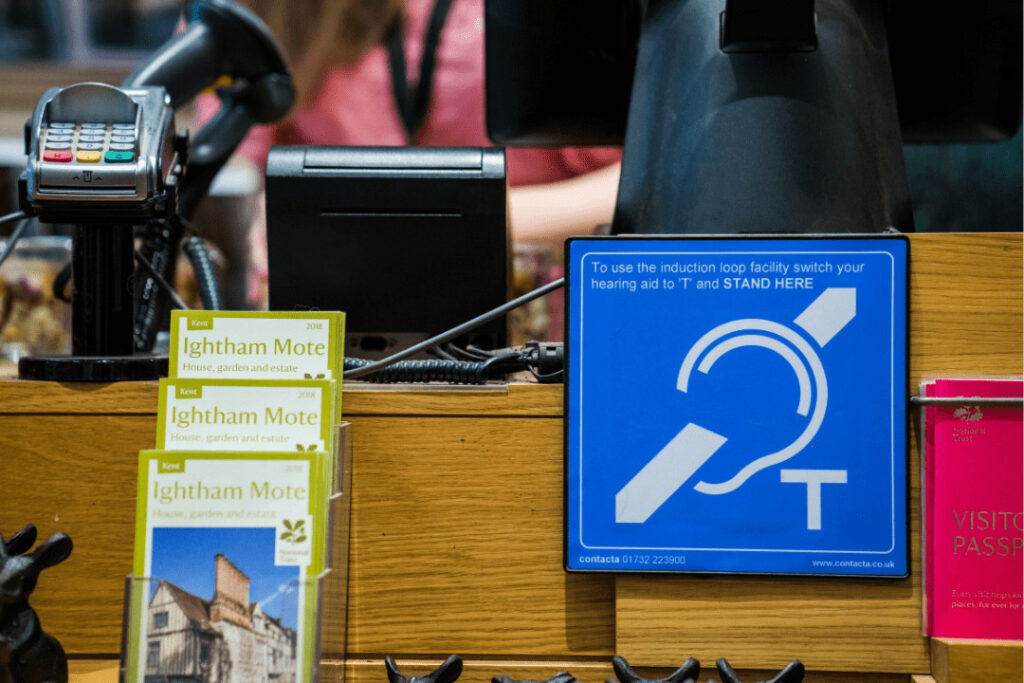
Products and hearing devices which support Auracast broadcast audio are starting to emerge, and we’re seeing increased interest in this exciting new technology. But what is Auracast? Here’s what you need to know.
What is Auracast?
Auracast is a feature of the latest version of Bluetooth. It allows high quality audio to be broadcast by one device and picked up by many other devices, without needing to go through a pairing process.
An Auracast broadcast can be picked up by an Auracast receiver. All kinds of hearing devices could be Auracast receivers. This includes earbuds, headphones, hearing aids and cochlear implants. The wide range of Auracast receivers will make Auracast useful for everyone, whether or not they have any form of hearing loss.
The device which sends the audio broadcast is called an Auracast transmitter. This could be something you can control yourself, like a smartphone, tablet, TV or computer. Broadcasting from a personal device will be useful in the home and in the workplace, when several people want to listen to the same thing through their hearing devices.
The Auracast transmitter could also be part of a public address system. This will be useful when you want to clearly hear audio in public spaces, such as train stations, lecture theatres or exercise classes.
What’s the difference between Auracast and Bluetooth?
Auracast and Bluetooth are very closely related. Bluetooth is a broad term describing a whole family of wireless communication devices. Auracast is a new feature (or capability) of some recent Bluetooth devices.
To be more precise, Bluetooth is a technology used to send and receive information over short distances using radio waves. There are many different versions of Bluetooth, with each new version having a different profile (profiles are like different languages). The two devices would both need to support the same profile for them to communicate.
The earliest versions of Bluetooth included two profiles for audio: Headset Profile (HSP), used for making phone calls, and Advanced Audio Distribution Profile (A2DP), used for streaming music.
The Public Broadcast Profile (PBP) is a new profile introduced in Bluetooth version 5.2 that’s used for Auracast broadcasting. It enables audio to be sent by one device and picked up by others without having to pair them first. This new broadcast capability was designed, in partnership with the hearing aid industry, to be used in assistive listening systems. It is so revolutionary that it has been given its own trademark.
How to identify an Auracast product
To carry the Auracast trademark, a device must undergo testing to ensure it will work properly with Auracast-enabled devices from other manufacturers.
The profiles supported by different Bluetooth devices can be confusing. For example, devices that are advertised as Bluetooth 5.2 (or above) do not have to support Auracast, so it’s important to check what a device can support before purchasing or using it. Also, some Bluetooth version 5.2 (or above) devices which do not currently support Auracast could be upgraded in the future via a firmware update.
The first hearing aids compatible with Auracast technology are now on the market. It is not yet clear when Auracast-enabled devices might be available on the NHS.
What’s the difference between Auracast and a hearing loop?
Auracast and hearing loops are both technologies that help people hear better, but they work in different ways.
Hearing loops transmit sound using a magnetic field, created by electrical current passing through a loop of wire. The field is strongest in the area enclosed by the loop. The signal is picked up by a second small loop of wire, called a telecoil, which is built into most current hearing aids and cochlear implant sound processors. To connect your hearing device to hearing loops, a telecoil programme (a setting that allows you to listen to the signal picked up by the telecoil) needs to be created by your audiologist, and you need to select that programme to hear the hearing loop signal.
If your audiologist is not able to support you with this then please let us know.

Hearing loops work well when installed and maintained according to internationally agreed standards. However, environmental factors can make it difficult and expensive to implement them. For example, other electrical equipment in a building can cause interference, metalwork or pipes can weaken the magnetic field, or installation of the loop wire may require extensive building work. Meanwhile, Auracast transmits sound using Bluetooth technology, which is more robust to environmental factors and can transmit sound across a whole room from a single, portable transmitter
Unlike hearing loops, several Auracast broadcasts can exist in the same space. The broadcast streams can be identified by name and can be made private using encryption, allowing people to choose which stream to connect to. The most common way of choosing a stream will be using a mobile phone, but other, more accessible, methods are being developed.
These capabilities make Auracast useful in situations where hearing loops may not work, but having to choose which stream to listen to could be more complicated for users who are familiar with using a telecoil. Some users may also prefer to continue using hearing loops, rather than Auracast.
Is there any point installing a hearing loop now?
Yes. Auracast is not expected to replace hearing loops soon. Instead, they will be used alongside hearing loops. While we think Auracast can have a transformational impact, it will take several years for all venues, manufacturers and users to have the right technology in place. We also don’t want to exclude anyone who relies on telecoil hearing aids or doesn’t have a smartphone.
Installing Auracast as it becomes available will improve accessibility, but only if it supplements, rather than replaces, a hearing loop.